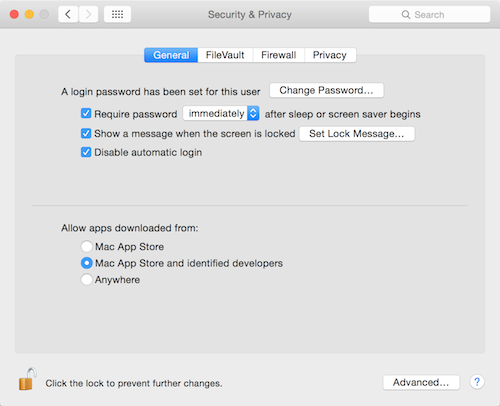Is your Mac up to date with the latest version of the Mac operating system? Is it using the version required by a product that you want to use with your Mac? Which versions are earlier (older) or later (newer, more recent)? To find out, learn which version is installed now.
Explore the world of Mac. Check out MacBook Pro, MacBook Air, iMac, Mac mini, and more. Visit the Apple site to learn, buy, and get support. You can build a universal binary on either an Apple silicon or Intel-based Mac computer, but you cannot debug the arm64 slice of your binary on an Intel-based Mac computer. It's possible to debug both slices of a universal binary on Apple silicon, but you must run the x8664 slice under Rosetta translation. ConceptDraw DIAGRAM software for Mac extended with the Entity-Relationship Diagram (ERD) solution is the best tool for drawing ER diagrams on a Mac. ER diagram tool for OS X ER diagram is the most popular database design tool which lets create graphical representations of database tables, their columns and also relationships. Downloaded the iso image and proceeded to make a Mac OS X bootable USB on windows. To create a bootable media to install Mac OS X leopard on my old macbook A1181. I used imageusb and installed. I was very happy to find this 10.5.4 version which worked perfectly. Many thanks to all. Building SuperSlicer on Mac OS. To build SuperSlicer on Mac OS, you will need the following software: XCode; CMake; git; gettext; XCode is available through Apple's App Store, the other three tools are available on brew (use brew install cmake git gettext to install them). SuperSlicer comes with a set of CMake scripts to build its.
If your macOS isn't up to date, you may be able to update to a later version.
Which macOS version is installed?
From the Apple menu in the corner of your screen, choose About This Mac. You should see the macOS name, such as macOS Big Sur, followed by its version number. If you need to know the build number as well, click the version number to see it.
Which macOS version is the latest?
Building Relationships Mac Os Catalina
These are all Mac operating systems, starting with the most recent. When a major new macOS is released, it gets a new name, such as macOS Big Sur. As updates that change the macOS version number become available, this article is updated to show the latest version of that macOS.
If your Mac is using an earlier version of any Mac operating system, you should install the latest Apple software updates, which can include important security updates and updates for the apps that are installed by macOS, such as Safari, Books, Messages, Mail, Music, Calendar, and Photos.
| macOS | Latest version |
|---|---|
| macOS Big Sur | 11.3 |
| macOS Catalina | 10.15.7 |
| macOS Mojave | 10.14.6 |
| macOS High Sierra | 10.13.6 |
| macOS Sierra | 10.12.6 |
| OS X El Capitan | 10.11.6 |
| OS X Yosemite | 10.10.5 |
| OS X Mavericks | 10.9.5 |
| OS X Mountain Lion | 10.8.5 |
| OS X Lion | 10.7.5 |
| Mac OS X Snow Leopard | 10.6.8 |
| Mac OS X Leopard | 10.5.8 |
| Mac OS X Tiger | 10.4.11 |
| Mac OS X Panther | 10.3.9 |
| Mac OS X Jaguar | 10.2.8 |
| Mac OS X Puma | 10.1.5 |
| Mac OS X Cheetah | 10.0.4 |
| Maintainer: | Cameron Eagans @cweagans.net> |
|---|
This part of the documentation is written by Cameron Eagans, a co-maintainer of Universal Ctags and the maintainer ofthe OSX packaging of this project.
Build Prerequisites¶
Building ctags on OSX should be no different than building on GNU/Linux. The same toolchains are used, and the Mac OSpackaging scripts use autotools and make (as you'd expect).
You may need to install the xcode command line tools. You can install the entire xcode distribution from the App Store,or for a lighter install, you can simply run xcode-select--install to only install the compilers and such. Seehttps://stackoverflow.com/a/9329325 for more information. Once your build toolchain is installed, proceed to the nextsection.
At this point, if you'd like to build from an IDE, you'll have to figure it out. Building ctags is a pretty straightforwardprocess that matches many other projects and most decent IDEs should be able to handle it.
Building Manually (i.e. for development)¶
You can simply run the build instructions in README.md.
Building with Homebrew¶
Homebrew (https://brew.sh/) is the preferred method for installing Universal Ctags for end users. Currently, the processfor installing with Homebrew looks like this:
Eventually, we hope to move the Universal-ctags formula to the main Homebrew repository, but since we don't have anytagged releases at this point, it's a head-only formula and wouldn't be accepted. When we have a tagged release, we'llsubmit a PR to Homebrew.
Mac Os Versions
If you'd like to help with the Homebrew formula, you can find the repository here:https://github.com/universal-ctags/homebrew-universal-ctags

Differences between OSX and GNU/Linux¶

Differences between OSX and GNU/Linux¶
There other things where building ctags on OSX differs from building on GNU/Linux.
- Filenames on HFS+ (the Mac OS filesystem) are case-preserving, but not case-sensitive in 99% of configurations. If auser manually formats their disk with a case sensitive version of HFS+, then the filesystem will behave like normalGNU/Linux systems. Depending on users doing this is not a good thing.
Contributing¶
Building Relationships Mac Os Download
This documentation is very much a work in progress. If you'd like to contribute, submit a PR and mention @cweagans forreview.

